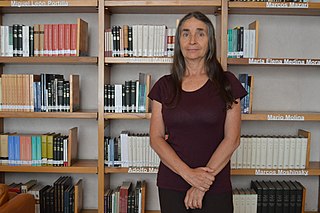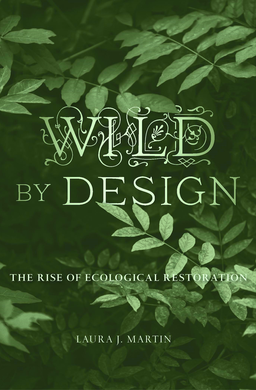Related Research Articles

The American Institute of Certified Public Accountants (AICPA) is the national professional organization of Certified Public Accountants (CPAs) in the United States, with more than 428,000 members in 130 countries. Founded in 1887 as the American Association of Public Accountants (AAPA), the organization sets ethical standards and U.S. auditing standards. It also develops and grades the Uniform CPA Examination. The AICPA maintains offices in New York City; Washington, DC; Durham, NC; and Ewing, NJ.

Sustainable agriculture is farming in sustainable ways meeting society's present food and textile needs, without compromising the ability for current or future generations to meet their needs. It can be based on an understanding of ecosystem services. There are many methods to increase the sustainability of agriculture. When developing agriculture within sustainable food systems, it is important to develop flexible business processes and farming practices. Agriculture has an enormous environmental footprint, playing a significant role in causing climate change, water scarcity, water pollution, land degradation, deforestation and other processes; it is simultaneously causing environmental changes and being impacted by these changes. Sustainable agriculture consists of environment friendly methods of farming that allow the production of crops or livestock without causing damage to human or natural systems. It involves preventing adverse effects on soil, water, biodiversity, and surrounding or downstream resources, as well as to those working or living on the farm or in neighboring areas. Elements of sustainable agriculture can include permaculture, agroforestry, mixed farming, multiple cropping, and crop rotation.

Habitat conservation is a management practice that seeks to conserve, protect and restore habitats and prevent species extinction, fragmentation or reduction in range. It is a priority of many groups that cannot be easily characterized in terms of any one ideology.

The Forest Stewardship Council GmbH (FSC) is an international non-profit, multistakeholder organization established in 1993 that promotes responsible management of the world's forests via timber certification. This organization uses a market-based approach to transnational environmental policy.
Adaptive management, also known as adaptive resource management or adaptive environmental assessment and management, is a structured, iterative process of robust decision making in the face of uncertainty, with an aim to reducing uncertainty over time via system monitoring. In this way, decision making simultaneously meets one or more resource management objectives and, either passively or actively, accrues information needed to improve future management. Adaptive management is a tool which should be used not only to change a system, but also to learn about the system. Because adaptive management is based on a learning process, it improves long-run management outcomes. The challenge in using the adaptive management approach lies in finding the correct balance between gaining knowledge to improve management in the future and achieving the best short-term outcome based on current knowledge. This approach has more recently been employed in implementing international development programs.

Ecological restoration, or ecosystem restoration, is the process of assisting the recovery of an ecosystem that has been degraded, damaged, or destroyed. It is distinct from conservation in that it attempts to retroactively repair already damaged ecosystems rather than take preventative measures. Ecological restoration can reverse biodiversity loss, combat climate change, and support local economies. Habitat restoration involves the deliberate rehabilitation of a specific area to reestablish a functional ecosystem. To achieve successful habitat restoration, it's essential to understand the life cycles and interactions of species, as well as the essential elements such as food, water, nutrients, space, and shelter needed to support species populations. When it's not feasible to restore habitats to their original size or state, designated areas known as wildlife corridors can be established. These corridors connect different habitats and open spaces, facilitating the survival of species within human-dominated landscapes. For instance, marshes serve as critical stopover sites for migratory birds, wildlife overpasses enable animals to safely cross over highways, and protected riparian zones within urban settings provide necessary refuges for flora and fauna. The United Nations named 2021-2030 the Decade on Ecosystem Restoration.
The Institute of Internal Auditors (IIA) is an international professional association. The IIA provides educational conferences and develops standards, guidance, and certifications for the internal audit profession.
Forest management is a branch of forestry concerned with overall administrative, legal, economic, and social aspects, as well as scientific and technical aspects, such as silviculture, protection, and forest regulation. This includes management for timber, aesthetics, recreation, urban values, water, wildlife, inland and nearshore fisheries, wood products, plant genetic resources, and other forest resource values. Management objectives can be for conservation, utilisation, or a mixture of the two. Techniques include timber extraction, planting and replanting of different species, building and maintenance of roads and pathways through forests, and preventing fire.

Eric Stowe Higgs is professor in the School of Environmental Studies at the University of Victoria. Trained in ecology, philosophy, and environmental planning, his work concerns ecological restoration, historical ecology, intervention ecology, and the changing character of life in technological society. He also works with the Mountain Legacy Project as the Principal Instigator.

Ecological design or ecodesign is an approach to designing products and services that gives special consideration to the environmental impacts of a product over its entire lifecycle. Sim Van der Ryn and Stuart Cowan define it as "any form of design that minimizes environmentally destructive impacts by integrating itself with living processes." Ecological design can also be defined as the process of integrating environmental considerations into design and development with the aim of reducing environmental impacts of products through their life cycle.

Sustainability accounting originated in the 1970s and is considered a subcategory of financial accounting that focuses on the disclosure of non-financial information about a firm's performance to external stakeholders, such as capital holders, creditors, and other authorities. Sustainability accounting represents the activities that have a direct impact on society, environment, and economic performance of an organisation. Sustainability accounting in managerial accounting contrasts with financial accounting in that managerial accounting is used for internal decision making and the creation of new policies that will have an effect on the organisation's performance at economic, ecological, and social level. Sustainability accounting is often used to generate value creation within an organisation.
A sustainability organization is (1) an organized group of people that aims to advance sustainability and/or (2) those actions of organizing something sustainably. Unlike many business organizations, sustainability organizations are not limited to implementing sustainability strategies which provide them with economic and cultural benefits attained through environmental responsibility. For sustainability organizations, sustainability can also be an end in itself without further justifications.
Ecological art is an art genre and artistic practice that seeks to preserve, remediate and/or vitalize the life forms, resources and ecology of Earth. Ecological art practitioners do this by applying the principles of ecosystems to living species and their habitats throughout the lithosphere, atmosphere, biosphere, and hydrosphere, including wilderness, rural, suburban and urban locations. Ecological art is a distinct genre from Environmental art in that it involves functional ecological systems-restoration, as well as socially engaged, activist, community-based interventions. Ecological art also addresses politics, culture, economics, ethics and aesthetics as they impact the conditions of ecosystems. Ecological art practitioners include artists, scientists, philosophers and activists who often collaborate on restoration, remediation and public awareness projects.
Environmental governance is a concept in environmental policy that steers markets, technology and society towards sustainability. It considers social, economic and environmental aspects of its policies.

Forest restoration is defined as “actions to re-instate ecological processes, which accelerate recovery of forest structure, ecological functioning and biodiversity levels towards those typical of climax forest” i.e. the end-stage of natural forest succession. Climax forests are relatively stable ecosystems that have developed the maximum biomass, structural complexity and species diversity that are possible within the limits imposed by climate and soil and without continued disturbance from humans. Climax forest is therefore the target ecosystem, which defines the ultimate aim of forest restoration. Since climate is a major factor that determines climax forest composition, global climate change may result in changing restoration aims. Additionally, the potential impacts of climate change on restoration goals must be taken into account, as changes in temperature and precipitation patterns may alter the composition and distribution of climax forests.
The restoration economy is the economic activity associated with regenerative land use, such as ecological restoration activities. It stands in contrast to economic activity premised on sprawl, or on the extraction or depletion of natural resources. The term is meant to convey that activities meant to repair past damage to natural and human communities are often economically beneficial at local, regional, and national scales.
A reference ecosystem, also known as an ecological reference, is a "community of organisms able to act as a model or benchmark for restoration." Reference ecosystems usually include remnant natural areas that have not been degraded by human activities such as agriculture, logging, development, fire suppression, or non-native species invasion. Reference ecosystems are ideally complete with natural flora, fauna, abiotic elements, ecological functions, processes, and successional states. Multiple reference ecosystems may be pieced together to form the model upon which an ecological restoration project may be based.

A remnant natural area, also known as remnant habitat, is an ecological community containing native flora and fauna that has not been significantly disturbed by destructive activities such as agriculture, logging, pollution, development, fire suppression, or non-native species invasion. The more disturbed an area has been, the less characteristic it becomes of remnant habitat. Remnant areas are also described as "biologically intact" or "ecologically intact."

Julia Carabias Lillo is a Mexican ecologist and Environmental Conservationist. She is a professor at the National Autonomous University of Mexico and served as the Secretariat of Environment and Natural Resources under President Ernesto Zedillo from 1994 to 2000.

Wild by Design: The Rise of Ecological Restoration is a 2022 book by Laura J. Martin, Associate Professor of Environmental Studies at Williams College. The book explains how ecological restoration became a global pursuit. Martin defines restoration as "an attempt to co-design nature with non-human collaborators." Wild by Design calls for the unification of ecological restoration and social justice.
References
- 1 2 "About SER". www.ser.org. Society for Ecological Restoration. Retrieved 22 January 2019.
- ↑ "SER 2017-2020 Strategic Plan (August 2017)" (PDF). Society for Ecological Restoration. Retrieved 22 January 2019.
- ↑ Society for Ecological Restoration International Science & Policy Working Group (2004) The SER international primer on ecological restoration. Society for Ecological Restoration International, Tucson, Arizona.
- ↑ McDonald T, Gann GD, Jonson J, Dixon KW (2016a) International standards for the practice of ecological restoration – including principles and key concepts. Society for Ecological Restoration, Washington D.C. http://www.ser.org/?page=SERStandards
- ↑ Higgs, Eric; Harris, Jim; Murphy, Stephen; Bowers, Keith; Hobbs, Richard; Jenkins, Willis; Kidwell, Jeremy; Lopoukhine, Nikita; Sollereder, Bethany; Suding, Katherine; Thompson, Allen; Whisenant, Steven (May 2018). "On principles and standards in ecological restoration". Restoration Ecology. 26 (3): 399–403. doi: 10.1111/rec.12691 . hdl: 1826/13291 .
- ↑ Gann, George D.; McDonald, Tein; Aronson, James; Dixon, Kingsley W.; Walder, Bethanie; Hallett, James G.; Decleer, Kris; Falk, Donald A.; Gonzales, Emily K.; Murcia, Carolina; Nelson, Cara R.; Unwin, Alan J. (May 2018). "The SER Standards: a globally relevant and inclusive tool for improving restoration practice-a reply to Higgs et al". Restoration Ecology. 26 (3): 426–430. doi:10.1111/rec.12819. S2CID 90909160.
- ↑ "Certified Ecological Restoration Practitioner Program". www.ser.org. Society for Ecological Restoration. Retrieved 22 January 2019.